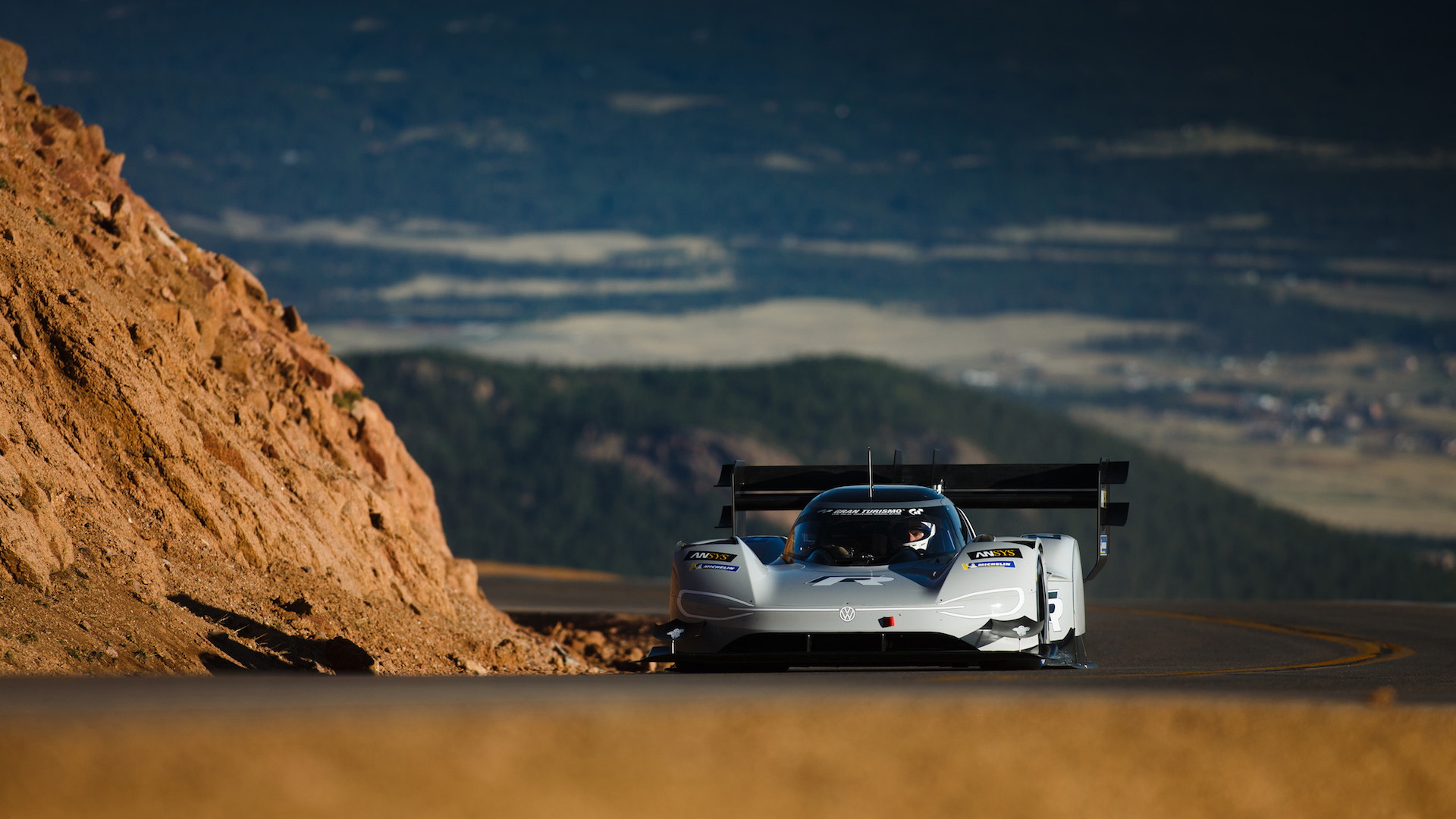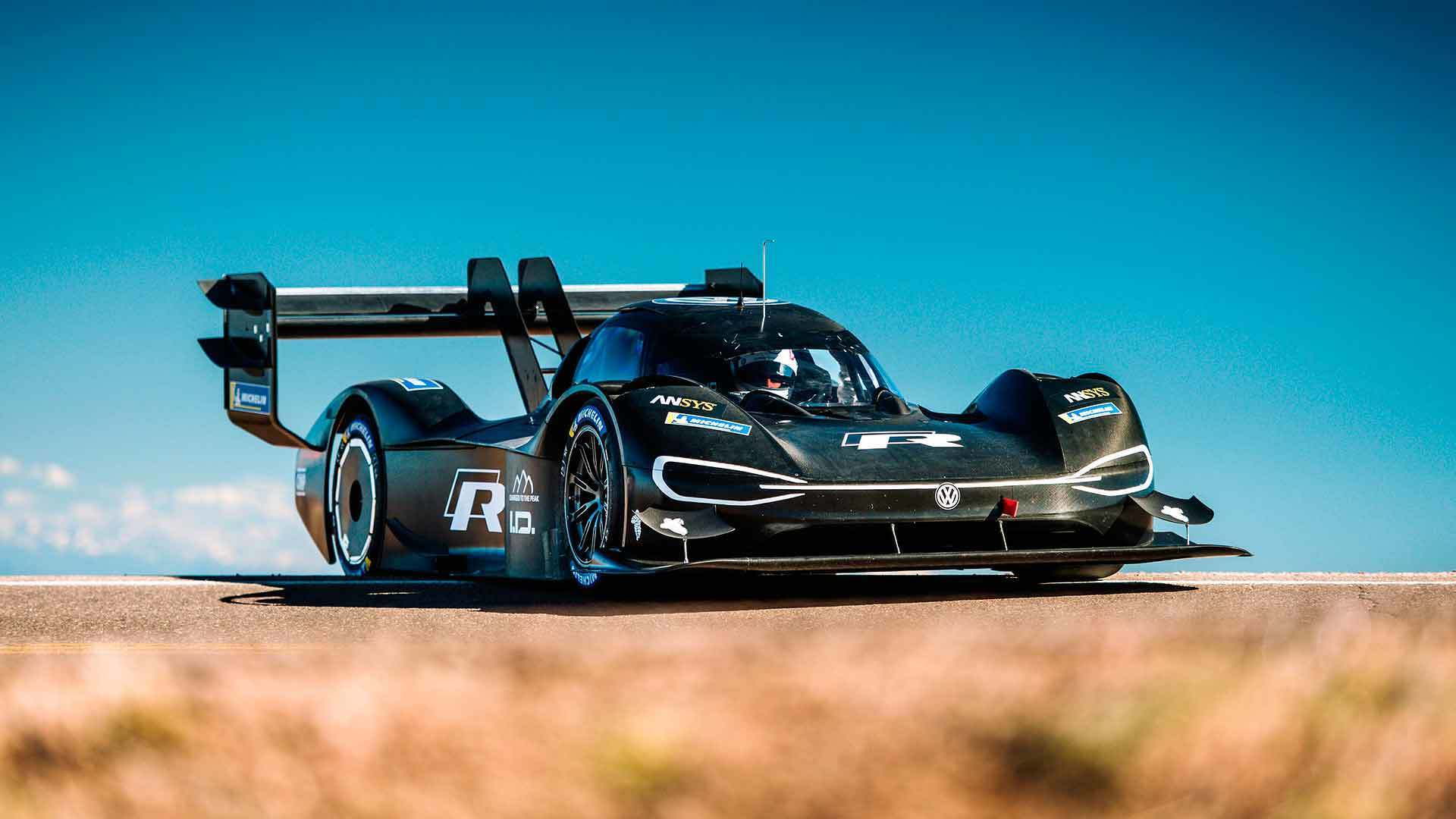Volkswagen will attempt to set a new record at the Pikes Peak International Hill Climb for the electric-car class with the ID R electric racer on June 24. But even before the car hits the course, an incredible amount of planning has gone into ensuring the ID R is a has every chance to compete.
Specifically, Pikes Peak sets a time limit for any car competing to recover after a sudden end to its run. For VW, that meant making sure the electric racer's battery could be completely charged in just 20 minutes. Thus, engineers worked to find the proper battery and charging system combination to ensure the ID R wasn't down for the count after just one run.
With a 12.4-mile trek up the hill, VW engineers could focus on acceleration and power instead of range. The electric powertrain, which produces 670 horsepower, will launch the car from 0-62 mph in 2.25 seconds, which is quicker than an F1 car. The electric powertrain is also up to the task of handling 156 acceleration events to match the amount of corners present at the demanding Pikes Peak course.
2018 Volkswagen ID R Pikes Peak race car
The battery itself, a lithium-ion unit, is split into two blocks: next to and behind the cockpit for the best power density, and both blocks are charged at the same time. In the ID R's case, range isn't nearly as important as the maximum power output.
Should the ID R face trouble and a restart is required, VW's on-site charging system is capable of charging the battery packs in the regulated 20-minute interval to get the car back to the starting line. But, engineers couldn't afford overheating the battery packs, which led to a 90-kw charging rate. The figure is high enough to juice the battery packs quickly but it's shy of Tesla's Supercharger system, which charges at a rate of up to 120 kilowatts.
VW ID R testing at Pikes Peak
Even with all of VW's planning to ensure smooth charging times, some unpredictable factors could interfere. Weather and air temperature could play havoc with the ID R's battery pack; if things get too hot, the battery pack will suffer, but cool the unit too much and the team risks condensation buildup.
And how is VW charging an electric race car at 9,000 feet above sea level? With a generator, of course. But, VW took the extra step to make sure the entire race is as green as possible. Unlike conventional generators that run on diesel, this unit runs on Glycerol, a by-product of bio-diesel, that produces virtually no harmful emissions or residues.



